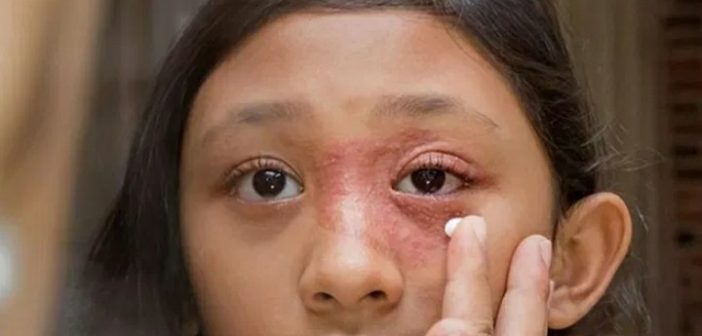Mumbai, the “City of Dreams,” transforms into a steamy cauldron during the summer months. While the arrival of the monsoon brings a welcome respite from the scorching heat, it also ushers in a hidden threat – a surge in fungal infections. This article explores the increased risk of fungal infections in Mumbai during summers, delves into the common symptoms and causes, and provides practical tips for prevention and treatment.
The Perfect Breeding Ground: Why Summers Favor Fungal Growth
Fungi, microscopic organisms that thrive in warm and humid environments, find Mumbai’s summer a breeding paradise. Here’s why:
- Increased Sweating: Summer’s relentless heat triggers excessive sweating, creating a moist environment on the skin – an ideal breeding ground for fungal spores.
- Monsoon’s False Start: The pre-monsoon period often witnesses erratic weather patterns with high humidity and occasional showers. This dampness further exacerbates the problem.
- Poor Ventilation: Crowded public transportation and poorly ventilated living spaces trap moisture and heat, creating the perfect conditions for fungal growth.
- Weakened Immunity: The intense heat can deplete energy levels and weaken the immune system, making the body more susceptible to fungal infections.
Common Culprits: Unveiling the Different Types of Fungal Infections
Several fungal infections plague Mumbaikars during the summer and monsoon season. Here’s a look at the most common ones:
-
Athlete’s Foot: This highly contagious fungal infection affects the feet, causing itching, redness, scaling, and cracking of the skin, particularly between the toes. Public showers, sweaty socks, and tight-fitting shoes can increase the risk.
-
Jock Itch: Similar to athlete’s foot, jock itch affects the groin, inner thighs, and buttocks. Symptoms include itching, burning, and a red, scaly rash. Tight-fitting clothing and excessive sweating can contribute to its development.
-
Ringworm: This fungal infection manifests as a circular, itchy rash that can appear anywhere on the body, including the scalp (scalp ringworm), beard (beard ringworm), and groin (jock itch). Direct contact with infected individuals or animals, or sharing contaminated objects, can spread ringworm.
-
Yeast Infections: Caused by an overgrowth of Candida fungus, yeast infections are prevalent among women. Symptoms include vaginal itching, burning, and discharge. Antibiotics, tight-fitting clothing, and hormonal changes can increase the risk.
Recognizing the Signs: Common Symptoms of Fungal Infections
Early detection is crucial for effective treatment. Here are some warning signs to watch out for:
- Itching: Intense itching, especially in areas prone to sweating and moisture accumulation, is a telltale sign of a fungal infection.
- Redness and Inflammation: The affected area may appear red, inflamed, and swollen.
- Scaling and Cracking: The skin might become dry, scaly, and develop cracks, particularly between the toes or in the groin area.
- Burning Sensation: Some fungal infections, particularly yeast infections, can cause a burning sensation in the affected area.
Prevention is Key: Practical Tips to Beat the Fungal Threat
By adopting simple measures, you can significantly reduce your risk of fungal infections:
- Maintain Hygiene: Wash the affected areas regularly with mild soap and lukewarm water. Thorough drying is crucial, especially between the toes and in the groin area.
- Choose Breathable Clothing: Opt for loose-fitting, cotton clothes that allow your skin to breathe. Avoid tight-fitting synthetic garments that trap moisture.
- Dry Your Feet Completely: After showering or swimming, ensure your feet are completely dry, especially between the toes. Consider using an antifungal foot powder.
- Change Sweaty Clothes: Don’t linger in damp clothes after sweating. Change into dry clothes as soon as possible.
- Wear Appropriate Footwear: Choose well-ventilated shoes made from breathable materials like leather or canvas. Avoid wearing closed-toe shoes for extended periods, especially in humid weather.
- Maintain a Healthy Diet: A balanced diet rich in fruits, vegetables, and whole grains strengthens your immune system, making you less susceptible to infections.
- Limit Sugary Drinks: Excessive sugar intake can disrupt the body’s natural balance of yeast, increasing the risk of fungal infections, particularly yeast infections.
Seeking Medical Help: When to Consult a Doctor
If symptoms persist despite home remedies, or if the infection seems severe, consult a dermatologist or healthcare professional. Early diagnosis and treatment are crucial for a speedy recovery and to prevent complications. Your doctor might prescribe antifungal creams, lotions, or medications depending on
the type and severity of the infection.
Living with the Monsoon: Long-Term Strategies for Fungal Health
Mumbai’s climate presents a unique challenge. Here are some long-term strategies to keep fungal infections at bay:
- Invest in a Dehumidifier: During the monsoon, consider using a dehumidifier to control moisture levels in your home, particularly in bathrooms and bedrooms.
- Maintain Proper Ventilation: Ensure proper ventilation throughout your living space. Open windows and doors whenever possible to allow fresh air circulation.
- Disinfect Shared Items: If you share towels, shoes, or gym equipment, ensure they are properly disinfected to prevent the spread of fungal infections.
- Boost Your Immune System: Incorporate practices like regular exercise, adequate sleep, and stress management to strengthen your immune system and fight off infections more effectively.
- Annual Checkups: Schedule regular checkups with your doctor, especially if you are prone to fungal infections. Early detection and preventive measures can significantly reduce the risk of recurring infections.
Conclusion: A Summer of Freedom, Not Fungal Frustration
Mumbai’s summers and monsoons offer a unique charm, but they also present the challenge of fungal infections. By understanding the risk factors, recognizing the symptoms, and adopting preventive measures, you can significantly reduce your chances of succumbing to these infections. Remember, a little awareness and proactive steps can ensure a summer filled with vibrant experiences, not fungal frustrations. Embrace the season’s beauty, stay vigilant, and enjoy the “City of Dreams” to the fullest!





